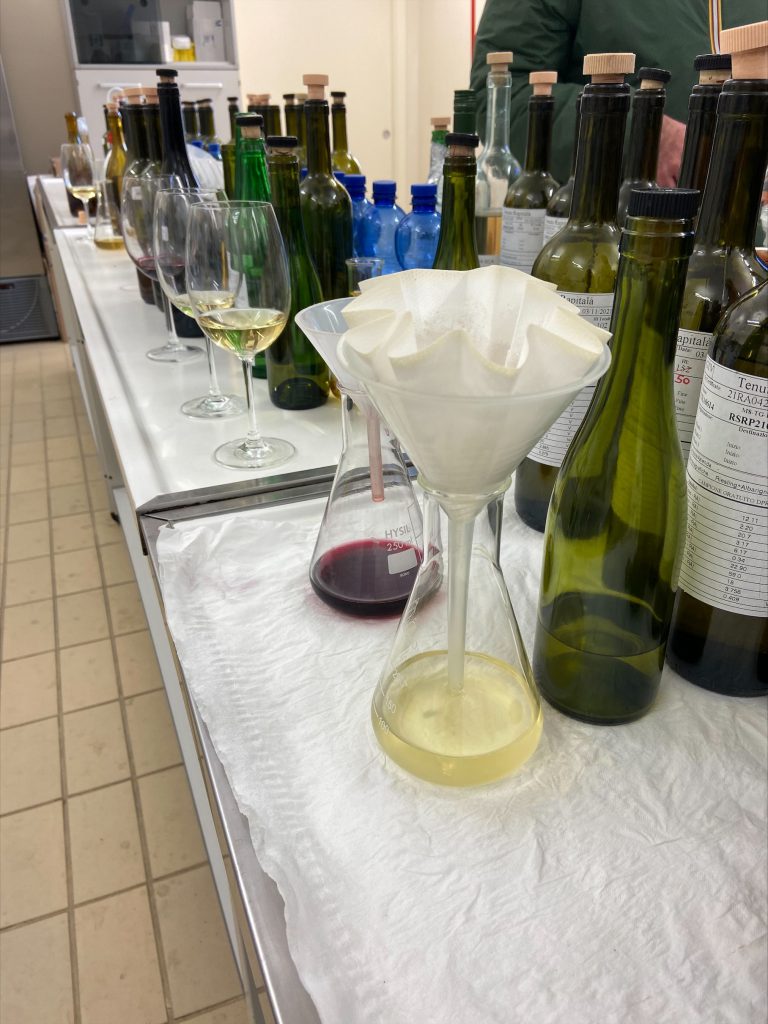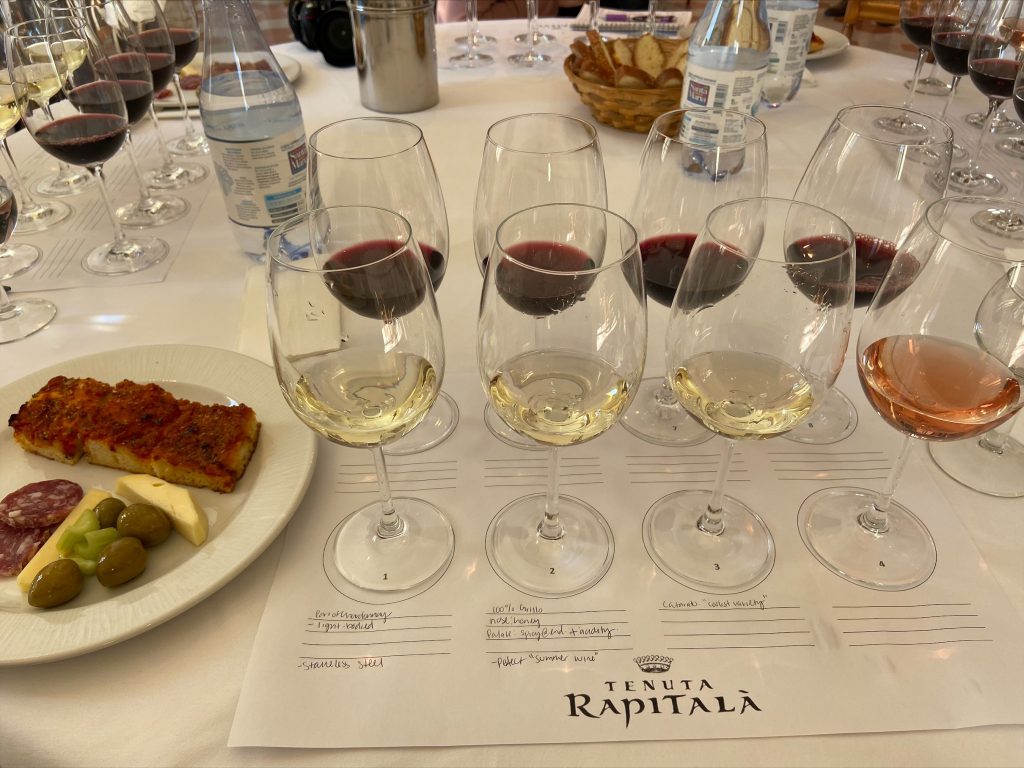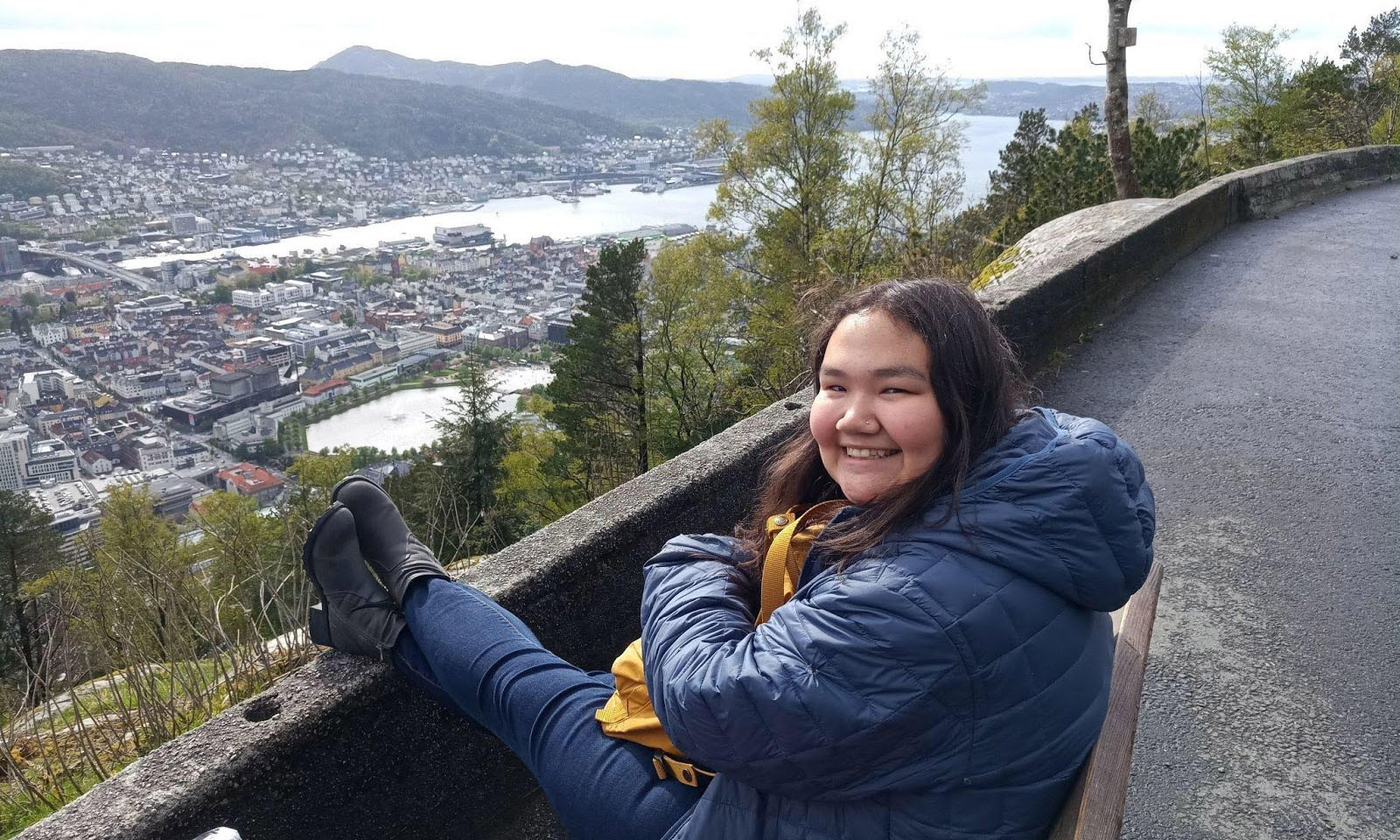Today’s post was written by Senior Daisy Tapia-Gonzalez, a Management major minoring in Wine Studies.
We started off the day with a visit to Tenuta Rapitalà, a winery located in Eastern Sicily and (to our surprise) run by a Count named Laurent Bernard de la Getanais! We learned that the qualities of the area, the landscape, the weather conditions, and other natural elements are significant in producing high- quality wines. We also learned the appreciation and importance of increasing organic farming techniques at both the vineyard and the cellar.
We began our visit with a tour of the vineyard and learning a few viticulture facts shared by Professor Antonino Pisciotta from the University of Palermo Department of Agriculture, Forestry, and Food Science. The winery had approximately 544 acres of land, of which 396 was dedicated for grape growing and the rest for olive trees and uncultivated land. We learned that thevineyards were characterized by having two prominent types of soils: clay and sand. These soils help both red and white varietals thrive in Mediterranean climate conditions and in the uniquelandscape where the vineyards are located. As we were walking, Professor Pisciotta also explained the double cordon as a vine training system and the use of manual and machine labor for harvest.
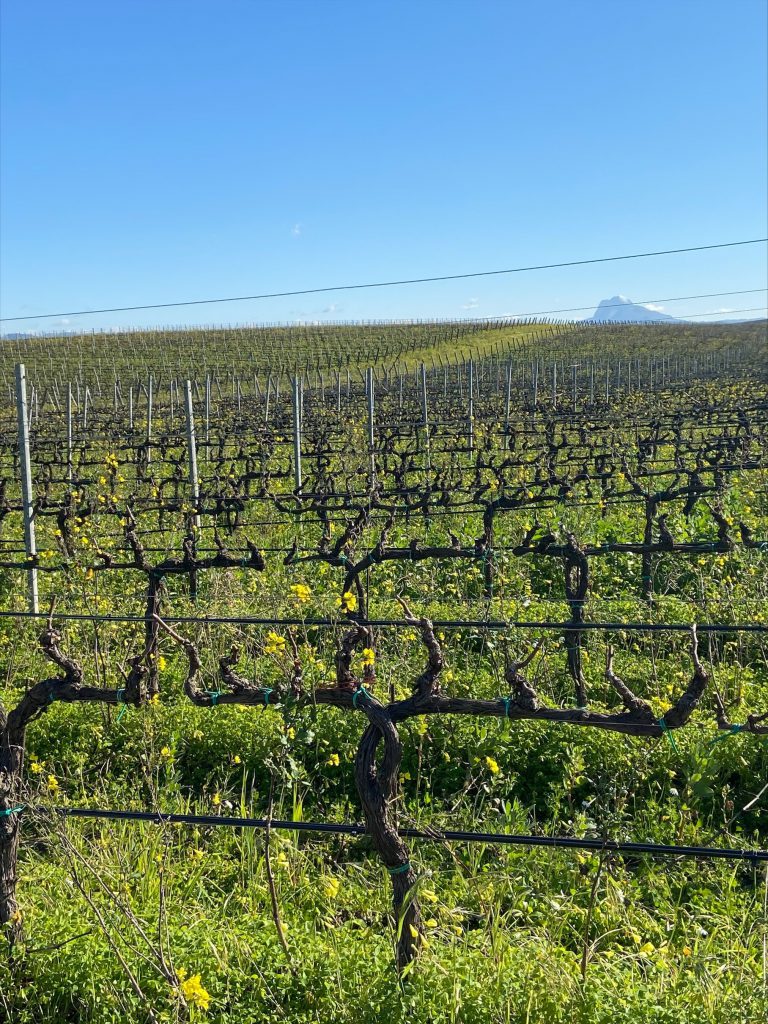

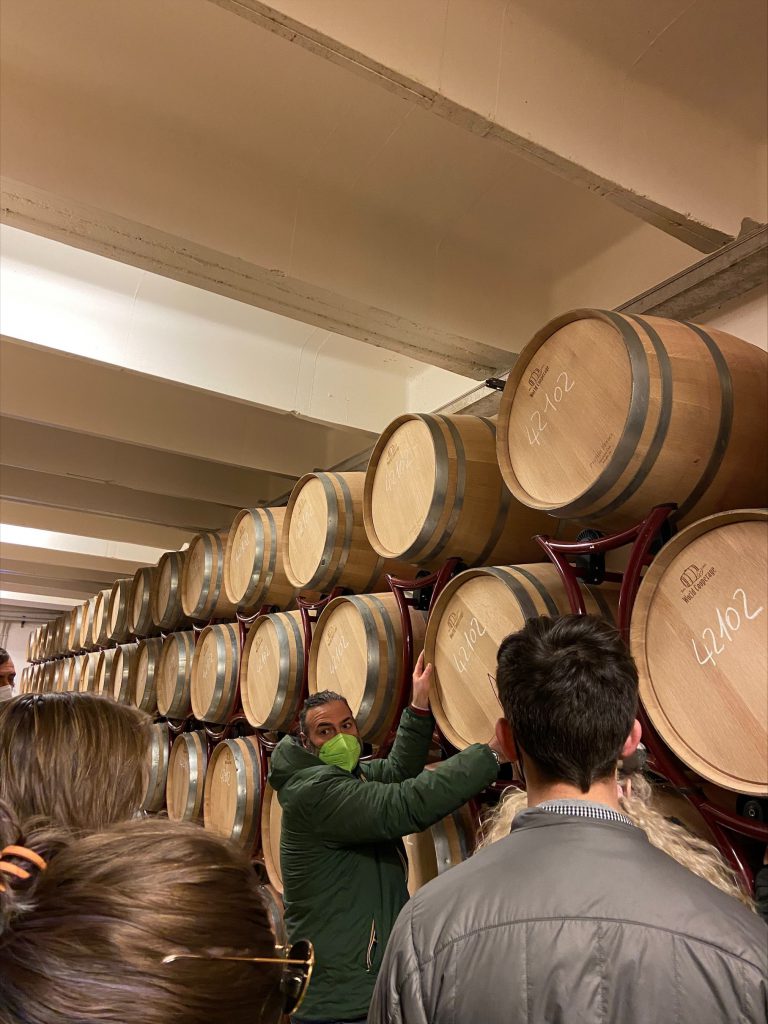
The process of making wine requires hard-work, effort, and analysis. We visited the wine lab located inside the cellar, where we observed technicians’ examples of their experiments and blending samples. This part was emphasized as essential in order to explore the different needs ofthe consumers and choose the kind of wine to create.
